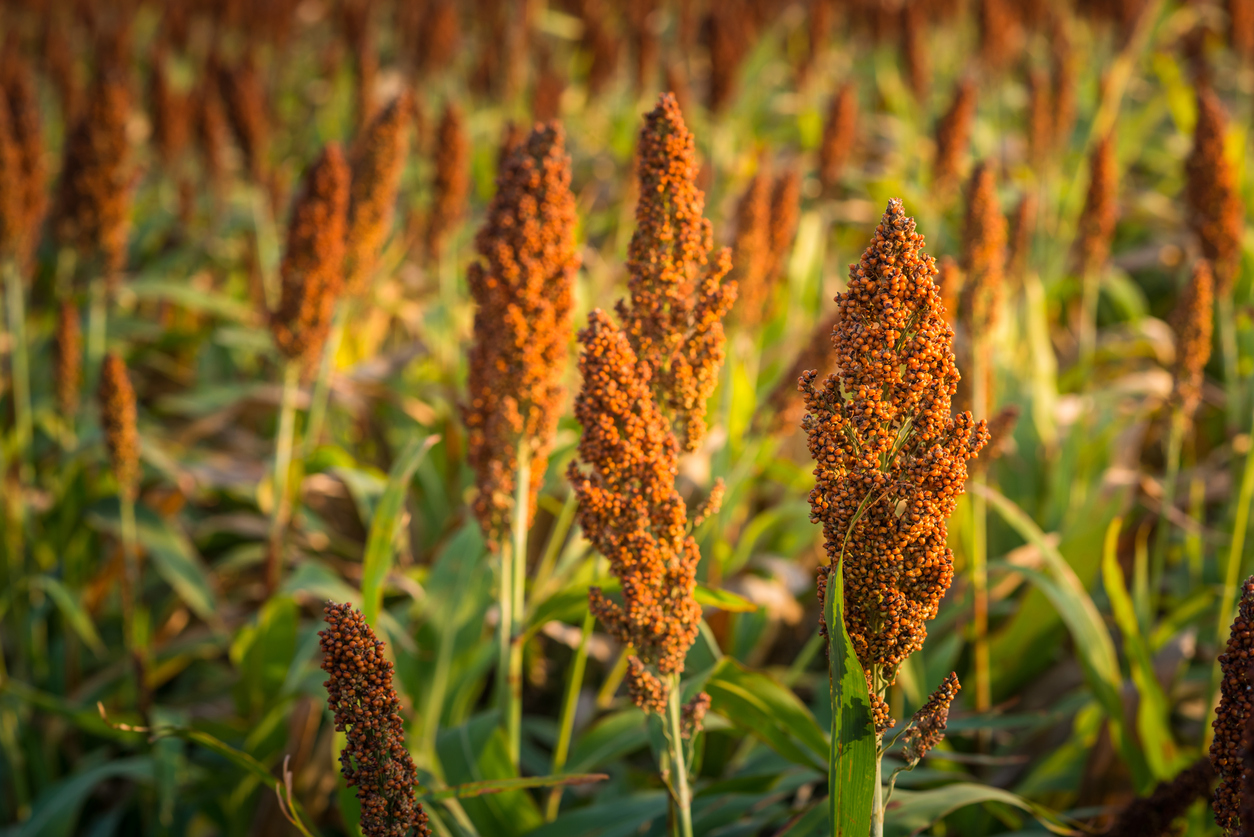
Reference Genomes Show Strengths, Similarities of Grain and Sweet Sorghum
July 31, 2019| |
Sorghum, one of the world's top five cereal crops is an important food and nutrition source as climate changes. Sorghum is one of the single most efficient crops in water use and solar energy conversion. A team of scientists from Clemson University, HudsonAlpha Institute for Biotechnology, the Department of Energy's Joint Genome Institute, and the University of Florida has created a new reference genome for sweet sorghum to compare it to the reference genome for grain sorghum to understand the different varieties' different strengths.
Grain sorghum is used largely for its grain in the food industry for flour. Sweet sorghum, on the other hand, is grown for its stalks which are crushed to make syrup. The comparison of the sweet and grain reference genomes has shown that their genetic structure is largely the same, but differences were found in their sugar transport system. The research paper published in BMC Genomics notes that changes in sugar transport mechanisms could reveal the genetic pathways that lead to sugar remaining in the stalk of sweet sorghum, rather than moving to the seed.
In the world's changing climate, important food crops are key to securing nutrition. Sorghum may also be used as a biofuel crop. Understanding the mechanisms that help this plant store sugar in its stalk will help develop more productive varieties.
For more details, read the article in HudsonAlpha Institute for Biotechnology website or download the open access paper in BMC Genomics.
| |
You might also like:
- Sorghum's Weed-Killing Power Transferred to Rice
- Plant Defense Genes Provide Clues to Safener Protection in Sorghum
- Scientists Discover Secret of How to Triple Number of Sorghum Grains
Biotech Updates is a weekly newsletter of ISAAA, a not-for-profit organization. It is distributed for free to over 22,000 subscribers worldwide to inform them about the key developments in biosciences, especially in biotechnology. Your support will help us in our mission to feed the world with knowledge. You can help by donating as little as $10.
-
See more articles:
-
News from Around the World
- Reference Genomes Show Strengths, Similarities of Grain and Sweet Sorghum
- USDA Approves Field Trials of Gene-edited, Virus Resistant Tomatoes
- Scientists and Regulators Tackle Issues on Agri-biotech and Biosafety in Jember, Indonesia
- New Software Enables Sensitive and Customized Off-target Detection for CRISPR-Cas9
- European Commission Grants Import Permit for Corn Rootworm Resistant Corn
- Plant-based Beyond Meat Offers a Healthier Option, Nutrition Experts Weigh In on the Hype
- European Commission Authorizes 10 GM Crops for Food and Feed
-
Research Highlights
- OsNCED5 Gene Controls Salt and Water Stress Tolerance in Rice
- Scientists Pinpoint a Rice Gene that Confers Broad-spectrum Herbicide Resistance
-
Plant
- DNA-free Genome Editing Using Preassembled CRISPR-Cas9 with Ribonucleoproteins
- European Scientists Join Forces to Enable Potential of Genome Editing
-
Read the latest: - Biotech Updates (December 10, 2025)
- Gene Editing Supplement (November 26, 2025)
- Gene Drive Supplement (February 22, 2023)
-
Subscribe to BU: - Share
- Tweet

